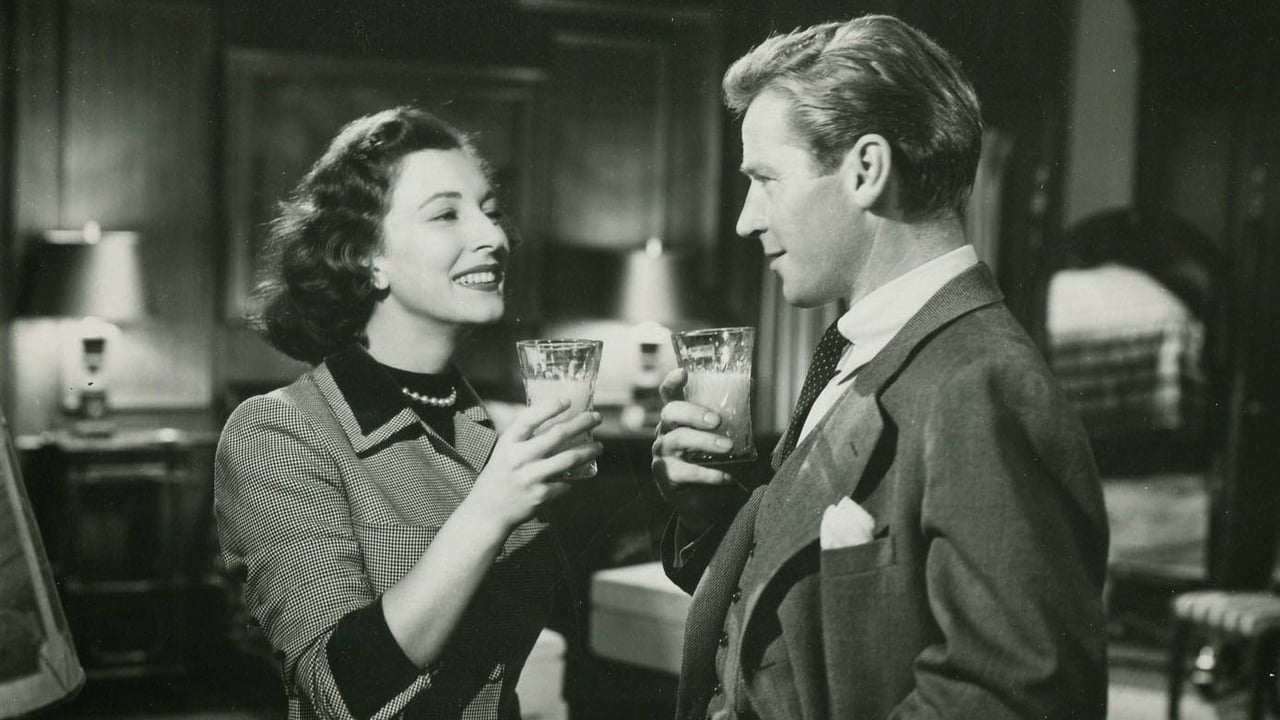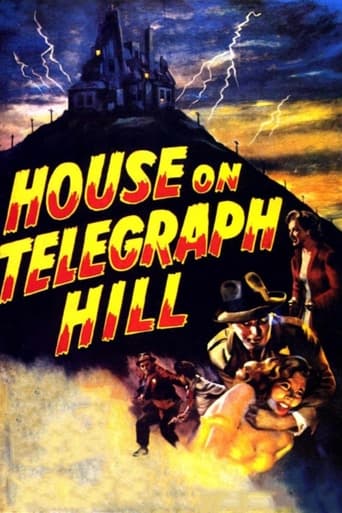

not horrible nor great
... View MoreBlending excellent reporting and strong storytelling, this is a disturbing film truly stranger than fiction
... View MoreIt really made me laugh, but for some moments I was tearing up because I could relate so much.
... View MoreThis is a small, humorous movie in some ways, but it has a huge heart. What a nice experience.
... View MoreConcentration camp survivor Victoria Kowelska finds herself involved in mystery, greed, and murder when she assumes the identity of a dead friend in order to gain passage to America.Parts of the film - including the runaway car scene - were shot on location in the Telegraph Hill area of San Francisco. Long shots of the exterior of the mansion were a combination of matte paintings and studio-made facades that were erected in front of the house at 1541 Montgomery Street. This was the location of the longtime Telegraph Hill restaurant called Julius' Castle, which closed its doors in 2008 after operating for 84 years.I love San Francisco as a movie backdrop. I have never been there personally, but the city's layout, hills and so on make it a great location for shooting, far more so than Los Angeles. The brief car chase scene in this film really shows why it is hard to shoot such things anywhere else.
... View MoreThough based on a novel, "The House on Telegraph Hill" looks like a mash-up of two famous Hitchcock flicks, with orange juice replacing milk. It's unlikely this was intentional, but it doesn't change the fact that "House" is annoyingly similar and much inferior to either of The Master's films.Robert Wise again demonstrates why he's such a profoundly mediocre director. The quality of his films seems to depend solely on the quality of the material he's working with. That's good -- he doesn't ruin good stuff -- but it's bad because he does little to enhance average (or worse) material. If there were ever a non-auteur director, Wise was it. (He even admitted to having no particular style.)"House" needs the director's help. The script does little to create suspense. Who is "good" and who is "bad"? Is Viktoria imagining things, or is she really in danger? The tale's final unraveling is so drawn-out and overwrought that it's hard not to laugh. As with Wise's "The Haunting", "House" is a suspense film remarkably lacking palpable tension.It's hard to believe Wise wasn't aware he was in Hitchcock territory, and he'd better be on his toes. But the result is little more than a soporific run-through of the script. Basehart's final revelation of his motives is drab, and seems to come out of left field (even though it's prefigured).The only good thing is Valentina Cortese's sympathetic and thoroughly convincing performance. If only everything else had been that good...
... View MorePretty standard woman-in-peril film raised a notch or two above the average by high production values and taut direction by Robert Wise.Valentina Cortesa plays a woman who is released from a concentration camp and takes on the identity of a woman who died in the camp. She uses this new identity as a ticket to America, marries Richard Basehart and assumes the mother role to the son the dead woman left behind. All the while, a possessive and meddling nanny lurks in the background and resists all of Cortesa's overtures to create a happy family.Richard Basehart was terrific as a villain. He had leading man good looks but was so good at being oily and duplicitous. There is some attempt at making the audience guess how much Cortesa's character is actually in danger from her husband (there's an inheritance involved) and how much the nanny is implicated, but only some. Mostly, the plot is straightforward, and we know Cortesa will get out of everything o.k., just not exactly how.The film has the look of a film noir, heightened by the San Francisco atmosphere, but it's really more of a conventional suspense thriller than a true noir. It received a sole Oscar nomination for its black and white art direction, courtesy of the many-times-nominated team of Lyle Wheeler and John DeCuir (art direction) and Thomas Little and Paul S. Fox (set decoration).Grade: B
... View MoreThe House On Telegraph Hill is both the title of this film and the goal of refugee Valentina Cortese. As a survivor from a concentration camp she wants out of Europe and life in America. So she takes the identity of a friend who died there who happened to be Polish nobility and who married into a wealthy American family from San Francisco. When she arrives in America who is to greet her but a cousin-in-law and guardian to her 'son' Gordon Gebbert. Richard Basehart is in that role and after some hesitation puts the moves on Cortese and they marry. That should cinch her citizenship in America. Things don't seem right for Cortese and not just the fact she's not who she says she is. There's a housekeeper played by Fay Baker who takes an intense dislike to her and also the fact that she's obsessed with Gebbert almost regarding him as her own. Basehart starts acting strange as well. Her only friend is William Lundigan who was a major in the army and whom she dealt with coincidentally, a little too coincidentally for my taste in the displaced persons camp after World War II.That and the fact that an incredibly stupid error on one of the protagonists parts trips up the scheme are what bars The House On Telegraph Hill. Making up for that are good performances from Cortese and Basehart who overcome story and script deficiencies. The film did get an Oscar nomination for Black and White Art&Set Direction and that is the film's other asset.The film seems to have been earmarked for Ingrid Bergman, but she was in Italian exile when The House On Telegraph Hill was being made. In any event it was a gain for Valentina Cortese who made the most of a performance in this film.
... View More